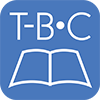By Tyson Thorne

As misunderstood as the book of Daniel is, few books of the Bible offers believers as much detail of -- or as much encouragement from -- end times prophesy. In Christian living, which is often befouled by the worlds hatred, encouragement is in dire need. Though we may understand cognitively that God will triumph, the heart’s understanding often wanes in the face of persecution. Daniel: The Key to Prophetic Revelation, by John Walvoord, makes sense of the crucial and often confusing points of Daniel. The book takes into consideration the “symbolic features” of Daniel’s work, while maintaining that much of it can be interpreted literally.
Walvoord excels in his use of historic and modern criticisms of the book of Daniel, giving much detailed attention to the theories of liberal and conservative scholars alike. Of the less-than-ancient and contemporary critics Walvoord cites John Calvin, Frederik Farrar, Carl Friedrich Keil, Herbert Carl Leupold, James A. Montgomery, and Harold Henry Rowley, to name a few. And his familiarity with the ancient sources is equally impressive, citing Athenaeus, Herodotus, Jerome, Flavius Josephus, and such apocryphal works as “The Prayer of Nabonidus.”
While it is important for students to have a well-rounded education regarding the book of Daniel, including the commentaries on those who believe and disbelieve the book proper, Walvoord is not above attacking the liberals and their arguments. His true colors shine through again and again in a sometimes-humorous fashion, yet he never dismisses their arguments with an airy wave of the hand. With every attack on the validity of Daniel’s self-titled tome he presents a well-reasoned — and often well-oiled — argument for the conservative viewpoint. While it is left up to the reader to decide for himself the meaning of Scripture, Walvoord’s book could make a pre-millennial, pre-tribulation conservative of most anyone.
While one of Walvoord’s most practiced assaults against liberals is denying the argument of silence (just because archeology has uncovered no evidence of a certain ruler does not mean that he never existed, only that the archeological record is incomplete), he brings out outstanding archeological discoveries that strengthen the conservative view of Daniel. Chapter five is chock-full of relevant examples.
In the ruins of Nebuchadnezzar’s palace archeologists have uncovered a large throne room 56 feet wide and 173 feet long which probably was the scene of the banquet. Midway in the long wall opposite the entrance there was a niche in front of which the king may well have been seated. Interestingly, the wall behind the niche was covered with white plaster as described by Daniel, which would make an excellent background for such a writing.
All of these facts, opinions, conjectures, evidences and linguistic advances are not considered in a vacuum, they lead to interpretive conclusions. John Walvoord champions the conservative case for the book of Daniel in a manner fit for the twenty-first century (even though it was written at the end of the twentieth). His conclusions are poignant and strongly upset the liberal argument that Daniel is a second century forgery, devoid of prophecy and devoid of a place in Holy Writ. He strongly assails their pining against the supernatural, and their foundational belief in a closed universe; his conclusions offer a God who is unique in all the world: real, caring, all powerful and ever-present in the workings of human life
My criticisms are few, but I believe important to note. First, all Scripture quotations are from the King James version. Whether this was by design, a method to avoid paying royalties to a publishing house for citing the entire book, or out of reverence for the aged standard is unclear. What is clear is that modern students would benefit from the use of a modern English translation. To be fair, however, Walvoord does compare translations when the meaning is unclear.
Second, His introduction is a wonderful overview of the key aspects to the study of Daniel. It introduces, and expounds when necessary, the relevant objections by liberals and does a wonderful job of overcoming them. But just as relevant is the study of the character of the author of the book. After all, Daniel records the authors life from the time of his enslavement by Babylon to his final years in service to the Persian Empire. A chapter on what keys to Daniel’s character can be observed from the text itself would make the book more complete.
Third, the book lacks photographic support. Perhaps this is an oversight by the author, or perhaps the publisher didn’t see the relevance of the extra publishing expenses, but pictures of the archeological finds he discusses would communicate more clearly than his descriptions. Further, photo’s suitable for publication in such scholarly works are available royalty-free from the ministries of archeology in both Israel and Iraq.
|
|
